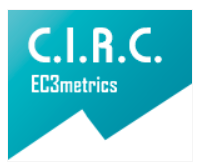Language Form and The Theory of Mind in Language Impairment
Estructura Lingüística y Teoría de la Mente en trastorno del lenguaje
Main Article Content
The concept of Theory of Mind (ToM) refers to the ability to put oneself in the other person's place and be able to interpret beliefs, desires and intentions of others. The purpose of this research was to determine the relationship between the development of the language form and the ToM in children with Mixed Specific Language Impairment (SLI) and children with typical language development.
The instrument used to determinate the development of the language structure were Test de Procesos de Simplificación Fonológica (TEPROSIF-R) and Test de Comprensión Auditiva de E-Carrow (TECAL); meanwhile, to evaluate the development of the ToM were used Sally and Anne and Mentalization tests. The sample consisted on 28 children with SLI (study group) and 28 children with normal language development (control group).
The results indicate that there is a relationship between the development of the ToM and the development of the structure of language in its expressive and comprehensive modality, mainly in children with Mixed SLI. From these results, it is necessary to intervene not only linguistic abilities but also those abilities related to ToM from the speech therapist tasks.
Publication Facts
Reviewer profiles N/A
Author statements
Indexed in
- Academic society
- Bogotá: Corporación Universitaria Iberoamericana
- Publisher
- Bogotá: Corporación Universitaria Iberoamericana
Article Details
American Psychiatric Asso. (2001). Manual Diagnóstico Y Estadístico De
Los Trastornos Mentales. Elsevier Masson.
Baron-Cohen, S. (2001). Theory of mind autism: A review. International
Review of Research in Mental Retardation: Autism, 23, 169-184.
Baron-Cohen, S., Leslie, A., & Frith, U. (1985). Does the autistic children have
a theory of mind? Cognition, 21, 37-46.
Bermúdez, M. (2009). Teorías infantiles de la mente y lenguaje: ¿Un
problema de huevo o gallina? Revista Iberoamericana de
Psicología: Ciencia y Tecnología (2), 67-85.
Calderón, L., Congote, C., Richard, S., Sierra, S., & Vélez, C. (2012).
Aportes desde la teoría de la mente y de la función ejecutiva a la
comprensión de los trastornos del espectro autista. CES Psicología,
(1), 77-90.
Díez, Pacheco, De Caso, García, & García-Martín. (2009).
Dodich, Cerami, C., Canessa, N., Crespi, C., Iannaccone, S., Marcone, A., .
Cappa, S. (2015). A novel task assessing intention and emotion
attribution: Italian standardization and normative data of the
story-based empathy.
Echeverry, I. G. (2010). Ciencia Cognitiva, Teoría de la Mente y autismo.
Pensamiento psicológico, 8(15), 113-124.
Flórez, R., Arias, N., & Torrado, M. C. (2011). Teoría de la mente en
tareas de falsa creencia y producción narrativa en preescolares:
Investigaciones contemporáneas. Revista colombiana de
Psicología (2), 20, 249-264.
Fresneda, M., & Mendoza, E. (2005). Trastorno especifico del lenguaje:
Concepto, clasificaciones y criterios de identificación. Revista de
Neurología, 41, 51-56.
Girli, & Tekin. (2010).
Gómez, I. (2010). Ciencia Cognitiva, Teoría de la mente y autismo. Revista
Pensamiento Psicológico, 8, 113-124.
Kana, R. K., Maximo, J. O., Williams, D. L., Keller, T. A., Schipul, S. E.,
Cherkassky, V. L., & ...Just, M. A. (2015). Aberrant functioning of the
theory-of-mind network in children and adolescents with autism.
Molecular autism, 6(1), 59.
Louro, M. (2015). Teoría de la Mente en personas con Síndrome de
Asperger: estudio de caso. Revista de estudios e investigación en
psicología y educación, 099-103.
Luque. (2002).
Mendoza. (2001).
Pavez. (2001).
Pavez. (2004). Test para la comprensión auditiva del lenguaje de E.
Carrow. Santiago, Chile: Universidad de Chile.
Pavez, M., Maggiolo, M., & Coloma, C. (2009). Test para evaluar procesos
de simplificación fonológica TEPROSIF-R. Santiago, Chile: Editorial
UC.
Pavez, Maggiolo, Peñaloza, & Coloma. (2009).
Pedreño, C., Pousa, E., Navarro, J. B., Pàmias, M., & Obiols, J. E. (2017).
Exploring the components of advanced theory of mind in autism
spectrum disorder. . Journal of autism and developmental
disorders, 47(8), 2401-2409.
Penn, Corrigan, Bental, Racenstein, & Newman. (1997).
Premack, & Woodruff. (1978). Map Reading by Chimpanzees. Revista
Primatologica, 29(4), 141-249.
Rapin, Allen, & Dunn. (1992).
Resches, Serrat, Rotan, & Esteban. (2010).
Roqueta, C. A., & Estevan, R. A. (2010). Dificultades pragmáticas en el
trastorno específico del lenguaje. El papel de las tareas mentalistas.
Psicothema, 22(4), 677-683.
Roqueta, C. A., Clemente Estevan, R. A., & Flores Buils, R. (2012). Cognición
Social y competencia pragmática. El caso de los niños y niñas
con Trastorno Específico del Lenguaje. International Journal of
Psychological Research, 5(1), 59-69.
Ruffman, T., Slade, L., Rowlandson, K., Rumsey, C., & Garnham, A. (2003).
How language relates to belief, desire, and emotion understanding.
Cognitive Development, 18(2), 139-158.
Serrano, J. (2012). Desarrollo de la teoría de la mente, lenguaje y
funciones ejecutivas en niños de 4 a 12 años. Cataluña, España:
Tesis Doctoral. Universidad de Girona.
Spanoudis, G. (2016). Theory of mind and specific language impairment
in school-age children. Journal of communication disorders, 61,
-96.
Tirapu-Ustárroz, J., Pérez-Sayes, G., Erekato-Bilbao, M., & Pelegrín-Valero,
C. (2007). ¿Qué es la teoría de la mente? Revista de Neurología, 44
(8), 479-489.
Villamisar, D. A., & Borbolla, M. A. (1993). La” teoría de la mente” y el autismo
infantil: una revisión crítica. Revista complutense de educación,
(2), 11-28.
Villanueva-Bonilla, C., Bonilla-Santos, J., Ríos-Gallardo, Á. M., & Solovieva,
Y. (2018). Desarrollando habilidades emocionales, neurocognitivas y
sociales en niños con autismo. Evaluación e intervención en juego de
roles sociales. Revista Mexicana de Neu19(3), 43-59.

















